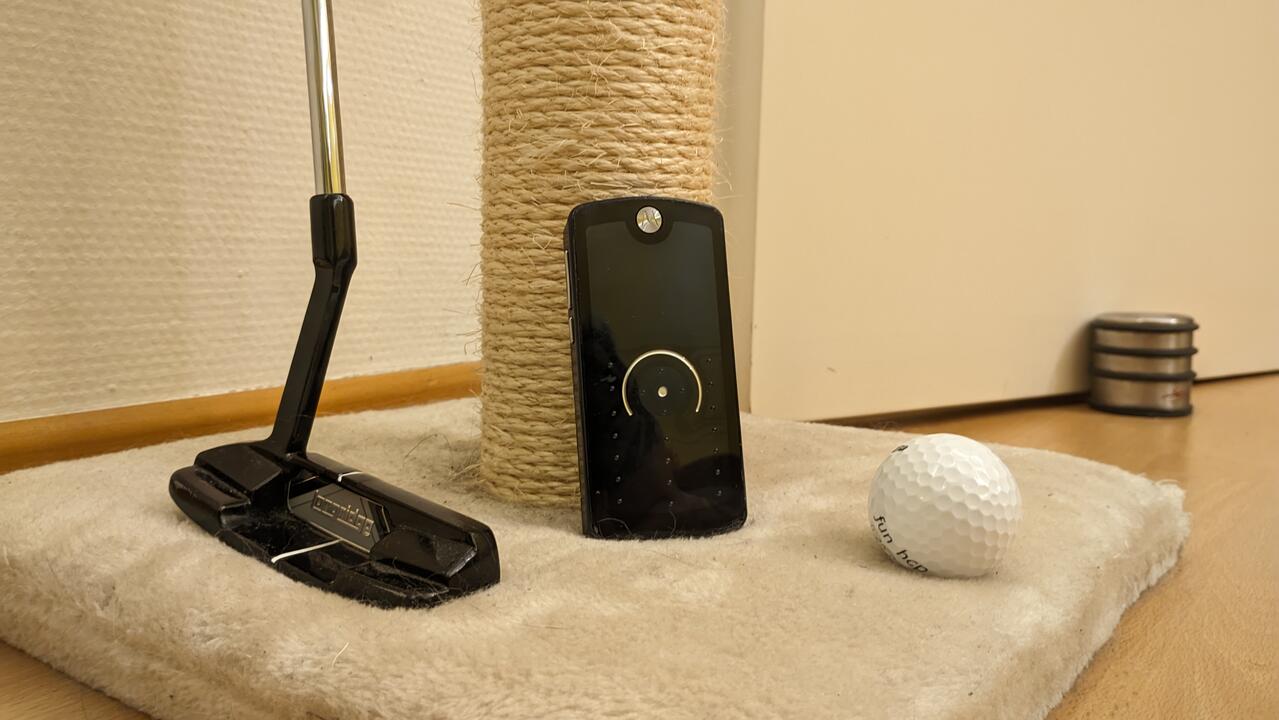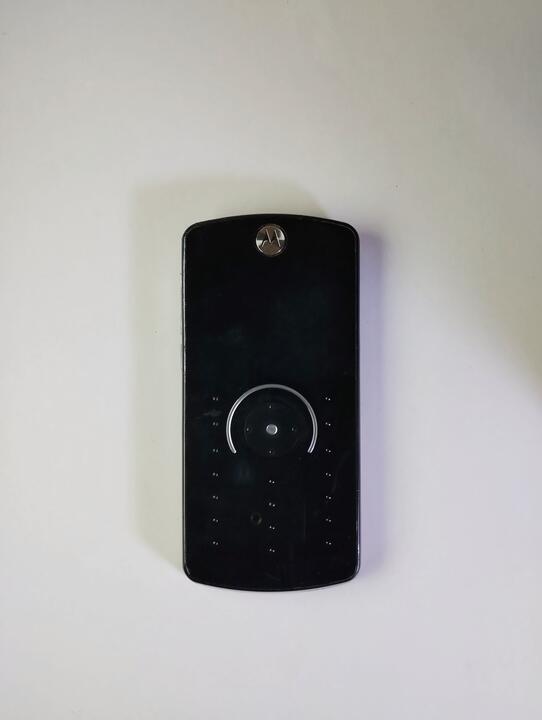Motorola ROKR E8
Status: 🟢 Fully functional 🟤 Sticky housing

Motorola and Apple’s love affair was short-lived and ended ingloriously—ruined by the ugly duckling that was the ROKR E1 (which I also had). Afterward, mutual accusations followed, leading to a “divorce.” Still, history left behind a few artifacts hinting at what could have been a longer partnership. The next model, ROKR E2, was already a full-fledged music phone—but without iTunes, though it still kept the signature green music note button to launch the audio player.
And then came its logical successor, a phone that seemed to be desperately trying to tell its buyer something important. The landscape-oriented display, touch-sensitive navigation wheel, and distinct media control button layout—we’ve seen this somewhere before, but I just can’t quite remember where.
I get the feeling that there was some groundwork laid for continued collaboration, but things turned out the way they did. The fact remains: both the ROKR E8 and ROKR EM30 were hopelessly late to the party. Had they launched a year and a half or two years earlier, they would have been the best music phones on the market. But this was 2008—the first iPhone had already arrived, the Nokia 5800 was about to become a massive hit, and on the budget side, the Nokia 5130 XpressMusic was dominating the low-cost music phone market. What can you do—Motorola just couldn’t keep up.
I only got to hold the ROKR E8 maybe once or twice. I used to drop by Motorola’s flagship store fairly often just to try out the latest models on display—though, to be fair, their showroom was shrinking every year. But Motorola always loved to go all out, especially with marketing. Some of their flagship models made appearances in Black Eyed Peas and Fergie music videos, and for the completely disastrous ROKR E1, they even brought in Madonna and Iggy Pop—but it just didn’t take off.
All in all, the E8 was stunning—its design was beautifully polished—but its software was embarrassingly slow. The proprietary Linux-based OS barely crawled along on its strangled 500 MHz Freescale processor. Enthusiasts later managed to tweak the kernel parameters, revealing that CPU performance was intentionally restricted. You guessed it—because the battery would die in just three to four hours.
And yet, there was something about the E8 that kept pulling me back. I’d find myself checking modding forums every now and then just to see what the community was up to—or just because I still wanted to own one. It was a remarkably stylish device, completely unique in its appearance and concept.
I’m really glad I finally managed to add it to my collection.
🇺🇦 HELP US HELP OTHERS, SAVE ANIMALS IN UKRAINE
Site map | Powered by crew | © 2025 TiredSysadmin
All photos from Vintage Cellphone and PDA Museum by TiredSysadmin are licensed under Creative Commons Attribution-NonCommercial-ShareAlike 4.0 International.

